This overclocking showdown is a follow-up to the PowerColor Red Devil RX 570 4GB versus the EVGA GTX 1060 3GB evaluation last week. Today, we have optimized our overclocks with all performance options set to their highest limits to get the most performance from each card.
At stock, the PowerColor overclocked Red Devil-clocked RX 570 won overall in performance over the stock-clocked EVGA GTX 1060 3GB. This time, we will overclock the EVGA GTX 1060 3GB and the Red Devil RX 570 each as far as they will go to see where they stand in relation to each other fully overclocked.
The Red Devil RX 570 OC
The $189 PowerColor Red Devil version of the RX 570 4GB is factory overclocked up to its maximum boost speeds of 1320MHz from the reference 1270MHz. The details of our original manual overclocking may be found here. We found that as long as the ambient temperatures remain cool and the Power and Temperature limits are maximized, it will not throttle even with the stock fan profile. After much testing, we settled on +30MHz to the core for a 1360MHz boost with memory clocks +250MHz to 2000MHz. 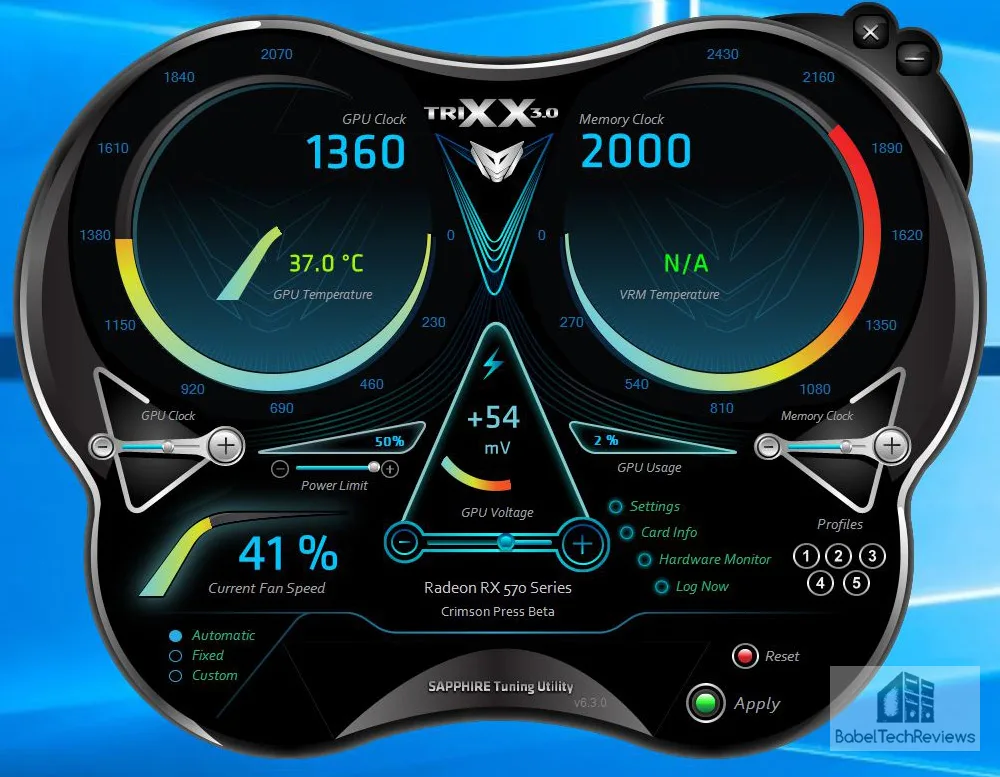 Unlike with the RX 470, we found that higher memory clocks gained significant performance. It appears that the Red Devil RX 570 is already running very close to its maximum core clock, and we needed +54mV to achieve another 30MHz for complete stability in all of our tested games.
Unlike with the RX 470, we found that higher memory clocks gained significant performance. It appears that the Red Devil RX 570 is already running very close to its maximum core clock, and we needed +54mV to achieve another 30MHz for complete stability in all of our tested games.
Overclocking the Gaming Edition of the EVGA GTX 1060 3GB
We devoted a separate evaluation to the EVGA GTX 1060 3GB which you can read here. It currently is also priced at $189 but comes with a game bundle choice of For Honor or Ghost Recon Wildlands. As before, we achieved a final stable overclock of +125 MHz to the core which settled in at or above 1974MHz with GPU Boost 3.0 for the majority of our benching as our room was cool for all of our game benchmarks. This time, we did not need to adjust the fan profile, but left it on automatic.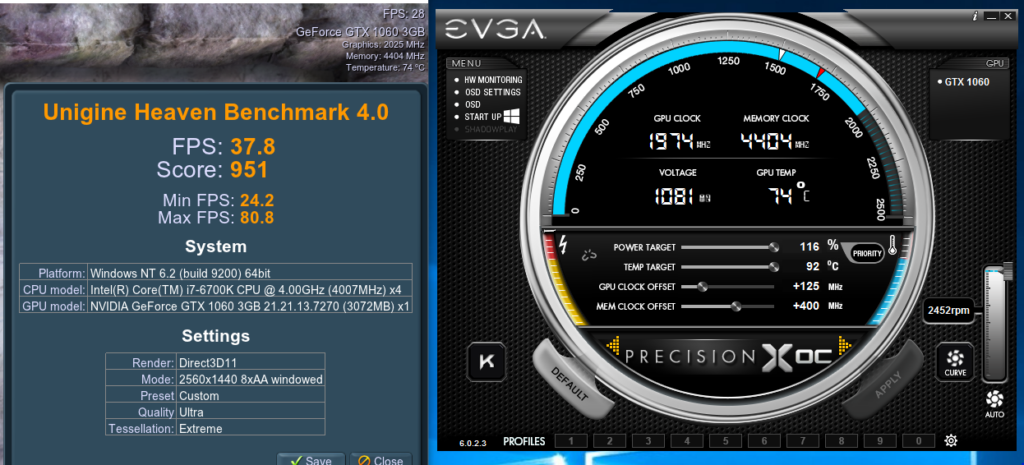 Our memory overclock remained at +400MHz for its clock of 4404MHz which greatly contributed to the increased performance. The fan never became obtrusive as we were able to leave it at stock and the GPU remained cool in the mid-70s C.
Our memory overclock remained at +400MHz for its clock of 4404MHz which greatly contributed to the increased performance. The fan never became obtrusive as we were able to leave it at stock and the GPU remained cool in the mid-70s C.
Testing Platform
Our testing platform is Windows 10 Home 64-bit, using an Intel Core i7-6700K at 4.00GHz which turbos to 4.6GHz for all cores as set in the ASRock Z7170 motherboard’s BIOS, and 16GB of HyperX DDR4 at 3333MHz. The settings and hardware are identical except for the two cards being tested.
We also feature our newest 2017 games, Ghost Recon Wildlands and Mass Effect: Andromeda, and we also include nine DX12 games including Sniper Elite 4. We use Unigine’s new Superposition benchmark and we also test VR with Futuremark’s Orange Room benchmark. We will compare the performance of 26 modern games at 1920×1080 and at 2560×1440 resolutions with maximum settings.
Before we run benchmarks, let’s check out the test configuration.
Test Configuration – Hardware
- Intel Core i7-6700K (reference 4.0GHz, HyperThreading and Turbo boost is on to 4.6GHz; DX11 CPU graphics).
- ASRock Z7170M OC Formula motherboard (Intel Z7170 chipset, latest BIOS, PCIe 3.0/3.1 specification, CrossFire/SLI 8x+8x)
- HyperX 16GB DDR4 (2x8GB, dual channel at 3333MHz)
- EVAG GTX 1060 3GB, Gaming Edition, manually overclocked, supplied by EVGA
- Red Devil RX 570 4GB, manually overclocked, supplied by PowerColor.
- Two 2TB Seagate 7200 rpm SSHDs for each platform
- EVGA 1000G 1000W power supply unit (for both platforms)
- Thermaltake Water2.0, supplied by Thermaltake
- Onboard Realtek Audio
- Genius SP-D150 speakers, supplied by Genius
- Thermaltake Overseer RX-I full tower case, supplied by Thermaltake
- ASUS 12X Blu-ray writer
- Monoprice Crystal Pro 4K
Test Configuration – Software
- GeForce WHQL 381.65 was used for the EVGA GTX 1060/3GB. High Quality, prefer maximum performance, single display. See control panel images below.
- AMD ReLive Software RX 570 launch press drivers were used for the benching the Red Devil RX 570. See control panel image below.
- VSync is off in the control panel.
- AA enabled as noted in games; all in-game settings are specified with 16xAF always applied
- All results show average frame rates including minimum frame rates shown in italics on the chart next to the averages in smaller font. Percentage differences are calculated between the average frame rates of the RX 470 and of the GTX 1060/3GB.
- Highest quality sound (stereo) used in all games.
- Windows 10 64-bit Home edition, all DX11 titles were run under DX11 render paths. Our four DX12 titles are run under the DX12 render path. Latest DirectX
- All games are patched to their latest versions at time of publication.
- Sapphire TriXX, v6.3.0.
- EVGA PrecisionX.
The 26 PC Game benchmark suite & 4 synthetic tests
Synthetic
- Firestrike – Basic & Extreme
- Time Spy DX12
- VRMark Orange Room
- Unigine SuperPosition benchmark
DX11 Games
- Crysis 3
- Metro: Last Light Redux (2014)
- Grand Theft Auto V
- The Witcher 3
- Fallout 4
- Assassin’s Creed Syndicate
- Just Cause 3
- Rainbow Si Siege
- DiRT Rally
- Far Cry Primal
- Call of Duty Infinite Warfare
- Watch Dogs 2
- Resident Evil 7
- For Honor
- Ghost Recon Wildlands
- Mass Effect: Andromeda
DX12 Games
- Tom Clancy’s The Division
- Ashes of the Singularity
- Hitman
- Rise of the Tomb Raider
- Total War: Warhammer
- Deus Ex Mankind Divided
- Gears of War 4
- Battlefield 1
- Sniper Elite 4
Vulkan Game
- DOOM
Nvidia Control Panel settings:
AMD Radeon Global Settings:
Let’s head to the performance charts to see how the overclocked-to-the-max EVGA GTX 1060 3GB Gaming edition compares with the overclocked-to-the-max PowerColor Red Devil RX 570.
Performance summary charts
Below is the summary chart of 26 games and 4 synthetic tests. The highest settings are always chosen and DX12 is picked above DX11 where available. Specific settings are listed on the performance charts. The benches were run at 1920×1080 and at 2560×1440.
All results, except for the synthetic benchmarks show average frame rates and higher is always better. Minimum frame rates are shown when they are available and they make sense, next to the averages but they are in italics and in a slightly smaller font. The Red Devil RX 570 stock results are in the first column, the overclocked Red Devil RX 570 results are in the second column, and third column represents the overclocked EVGA GTX 1060 3GB results with the stock-clocked results in the fourth column.
The chart may be easier to read when it is opened in separate tabs or windows.
The $189 stock-clocked EVGA GTX 1060 3GB is overall slower than the stock $189 PowerColor Red Devil RX 570 with the RX 570 winning nearly two-thirds of the overall 52 game benchmarks (30 wins for the RX 570, 21 wins for the GTX 1060 3GB, 1 tie), but overclocking them both makes a real difference to the performance results.
The superior overclocking abilities of the GTX 1060 3GB allow it to win in many more games than the overclocked Red Devil RX 570 than it did at stock. In 52 individual game benchmarks, the maximum overclocked Red Devil RX 570 now wins only 22 benchmarks against the 30 wins for the maximum overclocked EVGA GTX 1060 3GB Gaming edition.
Let’s head to our conclusion.
Conclusion
This has been quite an interesting exploration for us in evaluating the overclocked $189 Red Devil RX 570 versus the overclocked $189 (with game bundle) EVGA GTX 1060 3GB Gaming edition. The stock-clocked GTX 1060 3GB is a slower card – at stock only winning just over 1/3rd of our benches – but due to its superior headroom for overclocking, it pulls away from the overclocked Red Devil RX 570. The overclocked GTX 1060 3GB now wins in 30 out of 52 of our individual game benchmarks against the overclocked RX 570.
Both cards appears to scale well with an overclock although the GTX 1060 overclocks significantly further and uses less power.
Next up, we will return to benching Virtual Reality (VR). Stay tuned.
Happy Gaming!
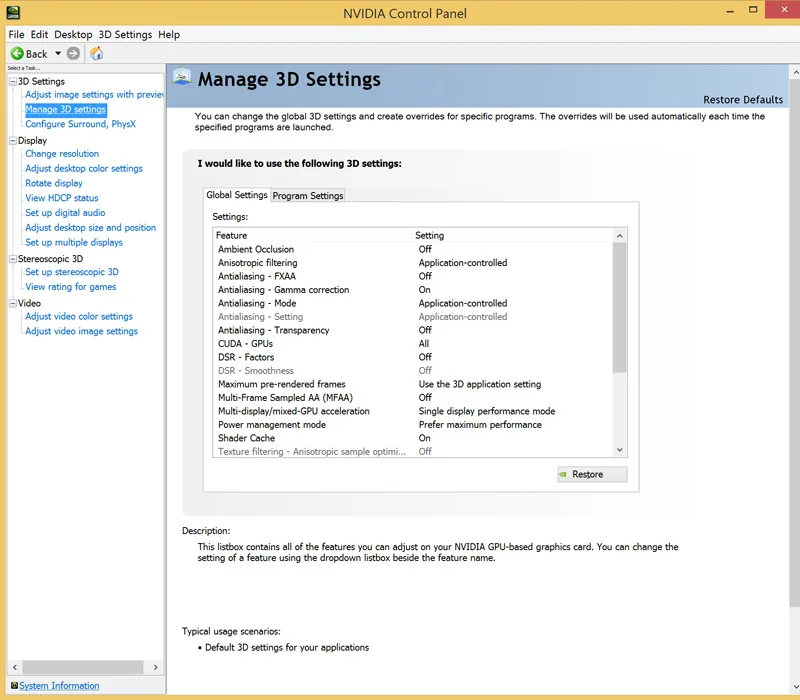
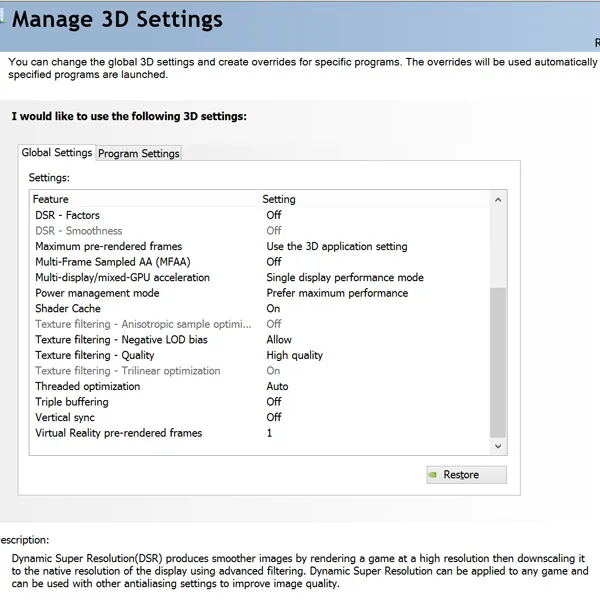
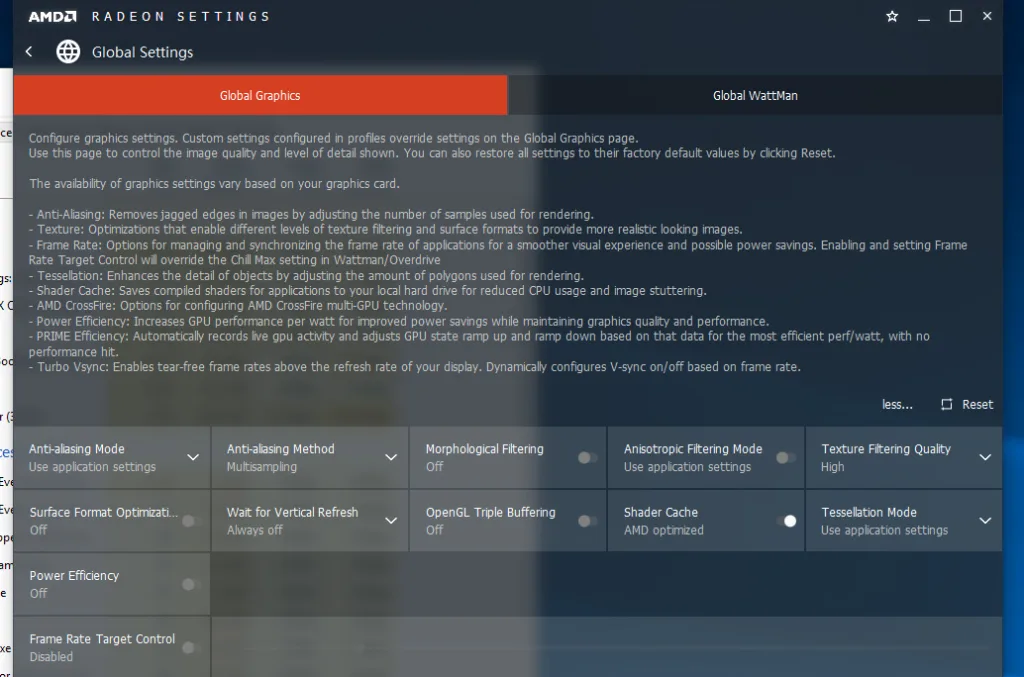




Comments are closed.